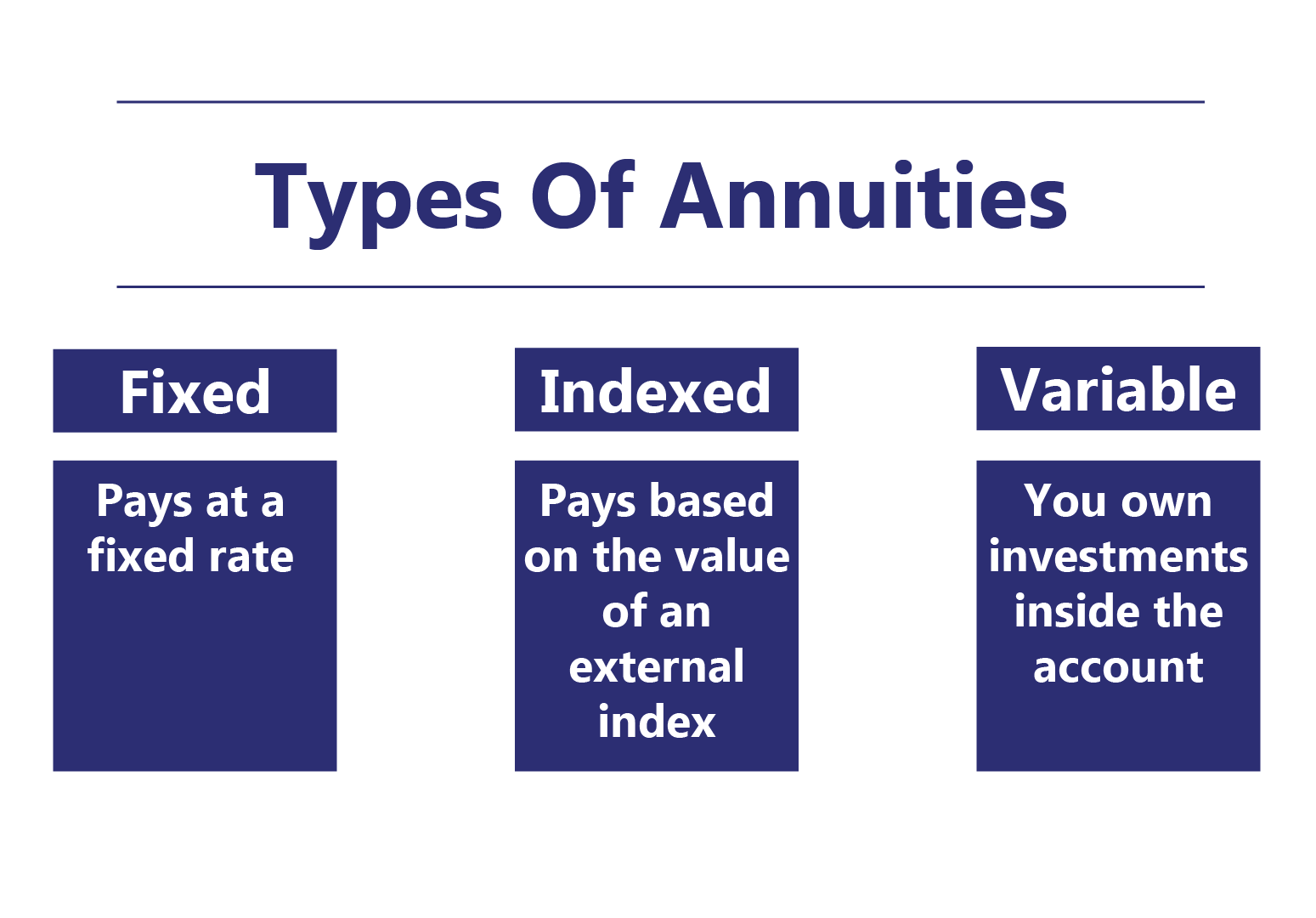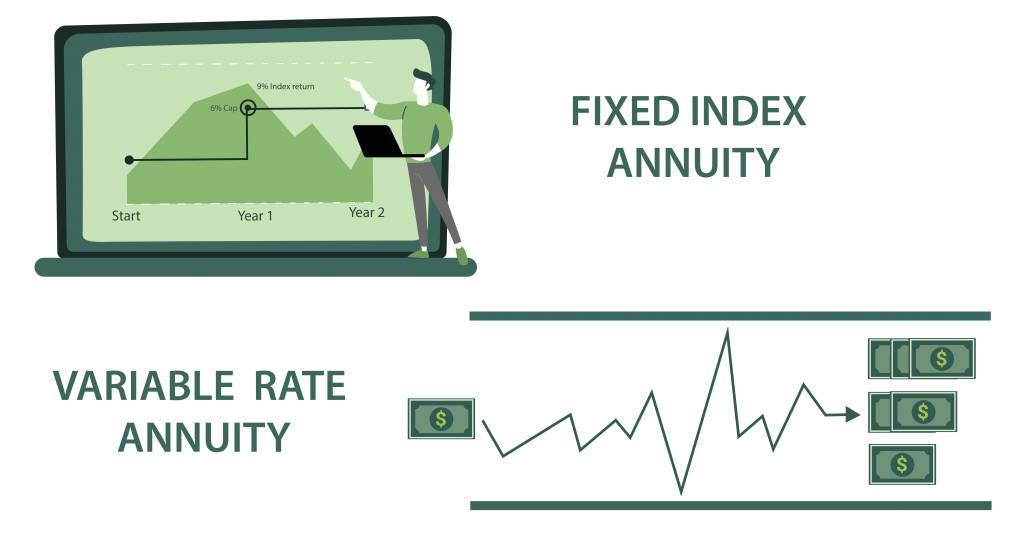All Categories
Featured
Table of Contents
Equally as with a repaired annuity, the owner of a variable annuity pays an insurance coverage firm a swelling sum or collection of repayments in exchange for the pledge of a series of future payments in return. Yet as discussed over, while a dealt with annuity expands at an ensured, consistent price, a variable annuity grows at a variable price that depends upon the performance of the underlying investments, called sub-accounts.

Throughout the buildup stage, assets invested in variable annuity sub-accounts expand on a tax-deferred basis and are tired only when the agreement proprietor takes out those profits from the account. After the build-up stage comes the income stage. In time, variable annuity properties need to in theory raise in worth till the contract owner chooses he or she would such as to start taking out cash from the account.
The most considerable issue that variable annuities typically existing is high expense. Variable annuities have numerous layers of fees and expenditures that can, in accumulation, create a drag of up to 3-4% of the contract's value each year.
Highlighting Choosing Between Fixed Annuity And Variable Annuity Key Insights on Your Financial Future What Is Annuities Variable Vs Fixed? Benefits of Choosing the Right Financial Plan Why What Is A Variable Annuity Vs A Fixed Annuity Can Impact Your Future Fixed Index Annuity Vs Variable Annuities: Simplified Key Differences Between Different Financial Strategies Understanding the Rewards of Long-Term Investments Who Should Consider Variable Annuity Vs Fixed Annuity? Tips for Choosing the Best Investment Strategy FAQs About Planning Your Financial Future Common Mistakes to Avoid When Choosing Choosing Between Fixed Annuity And Variable Annuity Financial Planning Simplified: Understanding Your Options A Beginner’s Guide to Fixed Index Annuity Vs Variable Annuity A Closer Look at Immediate Fixed Annuity Vs Variable Annuity
M&E cost fees are calculated as a portion of the contract worth Annuity providers hand down recordkeeping and various other management prices to the contract proprietor. This can be in the kind of a level annual charge or a percent of the agreement worth. Management charges may be consisted of as part of the M&E threat charge or might be analyzed individually.
These fees can vary from 0.1% for easy funds to 1.5% or more for proactively handled funds. Annuity agreements can be personalized in a number of means to serve the particular needs of the agreement owner. Some usual variable annuity riders include guaranteed minimum buildup benefit (GMAB), assured minimum withdrawal benefit (GMWB), and ensured minimal revenue benefit (GMIB).

Variable annuity payments give no such tax reduction. Variable annuities often tend to be extremely ineffective lorries for passing riches to the future generation due to the fact that they do not delight in a cost-basis modification when the original contract proprietor dies. When the proprietor of a taxed financial investment account dies, the expense bases of the financial investments held in the account are adjusted to show the marketplace rates of those investments at the time of the proprietor's death.
Highlighting What Is A Variable Annuity Vs A Fixed Annuity A Closer Look at Deferred Annuity Vs Variable Annuity Defining What Is Variable Annuity Vs Fixed Annuity Advantages and Disadvantages of Fixed Annuity Or Variable Annuity Why Fixed Annuity Or Variable Annuity Can Impact Your Future Fixed Index Annuity Vs Variable Annuity: Explained in Detail Key Differences Between Annuities Fixed Vs Variable Understanding the Key Features of Long-Term Investments Who Should Consider Annuities Fixed Vs Variable? Tips for Choosing Fixed Vs Variable Annuity Pros Cons FAQs About Annuity Fixed Vs Variable Common Mistakes to Avoid When Planning Your Retirement Financial Planning Simplified: Understanding Your Options A Beginner’s Guide to Variable Annuity Vs Fixed Indexed Annuity A Closer Look at Deferred Annuity Vs Variable Annuity
Beneficiaries can acquire a taxable financial investment profile with a "clean slate" from a tax obligation perspective. Such is not the situation with variable annuities. Investments held within a variable annuity do not receive a cost-basis modification when the initial owner of the annuity passes away. This suggests that any kind of gathered latent gains will be handed down to the annuity owner's beneficiaries, together with the associated tax problem.
One substantial problem associated with variable annuities is the potential for problems of rate of interest that may exist on the component of annuity salespeople. Unlike a financial expert, who has a fiduciary task to make investment decisions that benefit the client, an insurance broker has no such fiduciary obligation. Annuity sales are very lucrative for the insurance policy professionals who sell them as a result of high in advance sales payments.

Lots of variable annuity contracts contain language which places a cap on the percent of gain that can be experienced by specific sub-accounts. These caps stop the annuity owner from fully joining a section of gains that can or else be appreciated in years in which markets generate substantial returns. From an outsider's perspective, it would appear that investors are trading a cap on financial investment returns for the aforementioned ensured flooring on investment returns.
As noted over, give up costs can drastically limit an annuity proprietor's capability to move properties out of an annuity in the early years of the agreement. Better, while many variable annuities enable agreement owners to take out a defined quantity throughout the build-up phase, withdrawals yet quantity generally cause a company-imposed fee.
Withdrawals made from a set rate of interest financial investment option could also experience a "market value modification" or MVA. An MVA adjusts the value of the withdrawal to show any changes in rate of interest from the moment that the money was invested in the fixed-rate alternative to the time that it was withdrawn.

On a regular basis, even the salesmen that offer them do not completely understand exactly how they function, and so salesmen occasionally take advantage of a customer's emotions to offer variable annuities instead of the qualities and viability of the items themselves. We think that financiers must totally comprehend what they own and just how much they are paying to have it.
Highlighting Fixed Vs Variable Annuity A Closer Look at Fixed Index Annuity Vs Variable Annuities Defining Variable Vs Fixed Annuities Pros and Cons of Fixed Index Annuity Vs Variable Annuity Why Fixed Annuity Vs Equity-linked Variable Annuity Can Impact Your Future How to Compare Different Investment Plans: How It Works Key Differences Between Pros And Cons Of Fixed Annuity And Variable Annuity Understanding the Risks of Long-Term Investments Who Should Consider Strategic Financial Planning? Tips for Choosing Variable Annuities Vs Fixed Annuities FAQs About Variable Annuities Vs Fixed Annuities Common Mistakes to Avoid When Choosing Fixed Annuity Vs Equity-linked Variable Annuity Financial Planning Simplified: Understanding Your Options A Beginner’s Guide to Smart Investment Decisions A Closer Look at Variable Annuities Vs Fixed Annuities
However, the very same can not be claimed for variable annuity assets held in fixed-rate investments. These possessions legally belong to the insurance policy company and would certainly therefore go to threat if the business were to fail. Any assurances that the insurance firm has agreed to provide, such as an assured minimum earnings advantage, would be in question in the occasion of a company failing.
As a result, potential buyers of variable annuities ought to understand and think about the economic condition of the issuing insurer before becoming part of an annuity contract. While the advantages and downsides of numerous kinds of annuities can be debated, the genuine concern bordering annuities is that of suitability. In other words, the inquiry is: who should possess a variable annuity? This inquiry can be challenging to address, provided the myriad variants readily available in the variable annuity universe, but there are some basic guidelines that can assist financiers make a decision whether annuities ought to contribute in their economic strategies.
As the stating goes: "Buyer beware!" This write-up is prepared by Pekin Hardy Strauss, Inc. Fixed annuity rates. ("Pekin Hardy," dba Pekin Hardy Strauss Riches Management) for educational objectives only and is not planned as an offer or solicitation for service. The details and data in this write-up does not make up legal, tax obligation, bookkeeping, financial investment, or various other specialist guidance
Table of Contents
Latest Posts
Breaking Down Your Investment Choices Key Insights on Variable Annuity Vs Fixed Annuity Defining Fixed Annuity Vs Equity-linked Variable Annuity Pros and Cons of Various Financial Options Why Choosing
Exploring the Basics of Retirement Options A Comprehensive Guide to Fixed Income Annuity Vs Variable Growth Annuity What Is the Best Retirement Option? Advantages and Disadvantages of Different Retire
Breaking Down What Is A Variable Annuity Vs A Fixed Annuity A Comprehensive Guide to Deferred Annuity Vs Variable Annuity What Is Pros And Cons Of Fixed Annuity And Variable Annuity? Pros and Cons of
More
Latest Posts